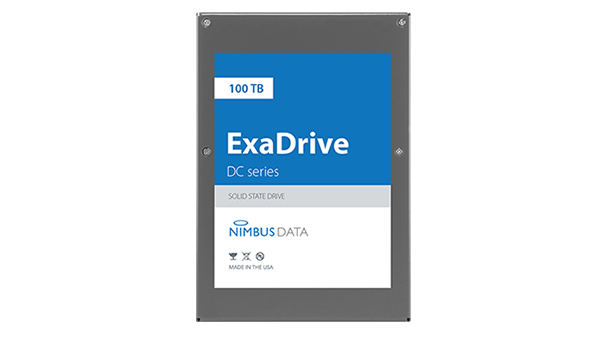
Solid State Drives (SSDs) make a huge difference to performance. That’s why the PlayStation 5 and Xbox Series X will come with them as standard, spelling the end of long loading times in games.
But the hardware doesn’t come cheap, with 1TB drives going for at least $100. So how much does the world’s biggest drives set you back? Well, you’re unlikely to be rushing out to buy one for your PC right away, let’s just put it like that.
- The best SSDs you can buy
- How does the PS5 compare to the Xbox Series X?
- Pretty much everything has leaked about the Samsung Galaxy Note 20 Ultra
The 50TB and 100TB versions of the Nimbus ExaDrive previously only had prices available on request, but the company has now revealed the price to those of us with no intention of buying, but a serious curiosity. Available in either SATA or SAS formats, the 50TB version will set you back just $12,500, while the 100TB model costs $40,000.
It may seem a bit backwards that the price-per-TB actually goes up the larger the unit you buy, given that’s completely the opposite way to how mechanical hard drive pricing functions, but that’s just the way it is with SSDs. It means that while you’re paying around $100 per TB on smaller units, prices hit $250 per TB for the 50TB model and $400 per TB for the 100TB one. Yeowch.
To be clear, these aren’t intended for non-commercial use. Rather, these are aimed squarely at businesses which need the highest density fast storage available. And by that benchmark, they sound pretty darned good: they’re of the 3.5-inch form factor – a little larger than your standard 2.5-inch drive – and use enterprise-grade MLC 3D NAND meaning they offer sequential read/write speeds of up to 500/460MB/s and up to 114,000/105,000 IOps reads/writes.
As you might hope if you splurge $40,000 on a bit of hardware, it’s got a pretty solid warranty. Nimbus will cover the drives for unlimited writes per day for five years – something the company presumably feels confident in doing, given the drive has a mean time of 2.5 million hours between failures. Given that a million hours is just over 114 years, it doesn’t sound like the company should be offering too many replacements...
Sign up to the T3 newsletter for smarter living straight to your inbox
Get all the latest news, reviews, deals and buying guides on gorgeous tech, home and active products from the T3 experts
-
 The new Tesla Model Y is here but you can’t have one (yet)
The new Tesla Model Y is here but you can’t have one (yet)With a facelift giving Cybertruck vibes, this new Tesla is only available in China and Australia – at least for now
By Alistair Charlton Published
-
 Full Nintendo Switch 2 announcement could be just days away
Full Nintendo Switch 2 announcement could be just days awayReliable industry expert claims the Switch 2 will be unveiled later this week.
By Rik Henderson Published